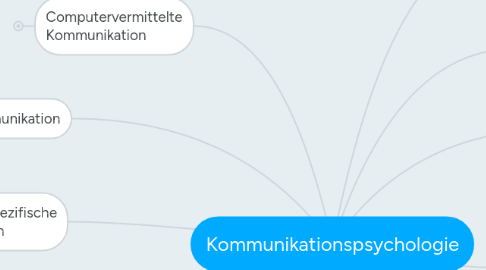Kommunikationspsychologie
by Nathalie Schulz


1. Persuasion
1.1. Yale-Ansatz zur Einstellungsänderung
1.2. Elaboration-Likelihood-Modell
1.3. Uni-Modell (Erb und Kruglanski)
2. Nonverbale Kommunikation
2.1. Funktionen (Bente und Krämer)
2.2. Patterson
2.3. Zusammenhang von Emotion und nonverbalem Verhalten
2.3.1. Emotion View (Ekman)
2.3.2. Social View (Fridlund)
2.3.3. Empirische Befunde
2.4. Geschlechtsunterschiede
2.5. Kulturunterschiede
2.6. Führung
3. Geschlechtsspezifische Kommunikation
3.1. Das Geschlecht im Sprachsystem
3.2. Das alltägliche Sprachverhalten
4. Verhaltensbiologie
4.1. Social Brain Hypothesis
5. Grundlagen der Kommunikation
5.1. Sozialpsychologische Perspektive
5.2. Liguistische Perspektive
5.3. Theory of Mind
6. Computervermittelte Kommunikation
6.1. Selektionsmodelle
6.1.1. Media Richness Model
6.1.2. Modell des sozialen Einflusses
6.2. Wirkungsmodelle
6.2.1. Kanalreduktionsannahmen
6.2.2. reduced social cues approach
6.2.3. SIDE
6.2.4. Ansatz der sozialen Informationsverarbeitung
6.3. Medienpsychologische Aspekte
6.3.1. idealisierte Selbstdarstellung
6.3.2. risikolose Selbstenthüllung
6.3.3. hochspezifische Kommunikations- und Handlungsräume
7. Definition
8. Klassische Kommunikationstheorien
8.1. Mathematical Theory of Communication
8.1.1. Information
8.1.2. Rauschen

